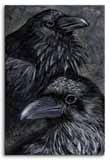|
|
|||||

|
Digging Composition 6 [Project Projector slide 1] As with traditional writing projects, there is no one type of MOO-based writing project. Particular assignments need to be developed from the goals of the course. [Project Projector slide 2] Small projects may not even use rooms. Students may just be asked to create an object that encapsulates an idea or represents a concept. A slightly larger project might ask students to create one or two rooms and incorporate objects into those rooms to represent an idea or concept. For instance, rather than have students create a homepage or write a biography, I’ve asked students to create a room with objects that introduces themselves to the class. [Project Projector slide 3] MOO-based writing projects, I think, are useful tools for getting students to read texts closely. Leslie Harris discusses just such a project in “Writing Spaces: Teaching MOOs to Teach Composition and Literature” in which he describes the Dante’s Inferno Project done on Diversity University. To help encourage close reading, Harris had his students reconstruct the Inferno on DU. I did a similar project in the Spring of 2000 with Emerson’s “American Scholar.” The assignment is available at http://pages.slu.edu/student/walterj/emerson_assignment.html. [For another example of MOO as a writing space, see the Emerson University Library room, which explains Emerson's concept of education by nature. This room was inspired by a room created by some students for the project above — their work no longer exists. This particular example is a log with commentary which explains how the room and objects work as MOO-based writing.] Digging 1 | Digging 2 | Digging 3 | Digging 4 | Digging 5 | Digging 7 | Digging 8 | Digging 9 | Digging 10 |
||||
|
|||||